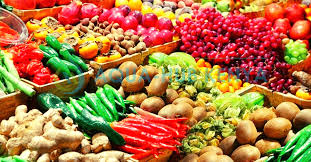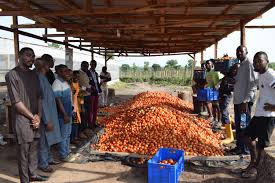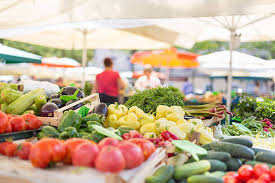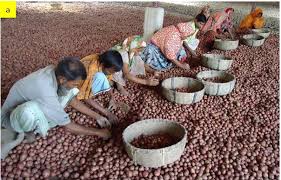In the previous article, the focus was on the physical functions that include activities involving the physical handling of farm products. However, there are other functions that do not involve physical handling of products. Some of the facilitating functions discussed here fall under this category, although certain activities mentioned can also be considered physical.
Read Also: 12 Medicinal Health Benefits of Nerium (Nerium Oleander)
Sorting, Grading, and Standardization of Agricultural Products

Sorting is a functional marketing activity, involving the physical separation of products with different qualities. This separation may or may not follow established standards. For instance, a tomato farmer may sort small, damaged, or moldy fruits before selling them.
Grading and standardization go beyond sorting. They refer to the grouping of products based on predetermined standards and specifications. Grading involves sorting products into different lots of some hierarchical market quality, each bearing its own name and label.
Quality may be distinguished by size, shape, flavor, degree of ripeness, length of staple (in cotton), or other commercial value. The purpose of grading is to help buyers select the most suitable lots of produce for their intended uses.
Accurate grading enables buyers to purchase exactly what they need and are willing to pay for, increasing their satisfaction and improving marketing system efficiency.
Grading also eliminates the need for a physical examination of the products since each lot or grade adheres to a set quality standard. This becomes particularly important in the case of export crops where buyers and sellers are separated by long distances, making physical inspection impractical.
Inspection is closely related to grading and, in many cases, is part of the grading process. It involves the physical examination of products by designated officers to determine the grade of the commodity. For example, seed cotton is graded by produce examiners from the Ministry of Agriculture before it is sold to cotton buyers.
Agricultural products in their natural state lack uniformity, but buyers and consumers desire uniform products. Therefore, there must be a basis for describing products for standardization purposes. Standards are based on several factors. For example, the main factors in determining the grade of palm oil include moisture content, fatty acid levels, and the amount of impurities.
Similarly, for cotton, the following factors are considered:
i. Percentage of immature seed cotton
ii. Percentage of damaged or stained seed cotton
iii. Presence of insects, insect damage, and leaf trash
iv. Presence of foreign fibers and stalks
v. Presence of minerals and moisture
Grading and standardization provide numerous advantages throughout the marketing system. Products can be bought and sold without prior examination, marketing values are better understood, and products of similar grades can be stored in bulk. Additionally, grading allows premium prices to be paid for higher-quality products.
Advantages of Uniform Grading of Farm Produce

A uniform grading system enhances pricing and operational efficiency in agricultural markets due to the following reasons:
1. Improved Quality: Producers strive to improve the quality of their produce to earn higher prices.
2. Price Precision: Uniform grading increases the precision of price formation through greater knowledge of product quality.
3. Expanded Market Competition: Grading increases competition and expands the geographical limits of the market by reducing the need for physical inspection by buyers.
4. Efficient Allocation: Grading allows for the systematic allocation of commodities for different uses in the market. For example, certain types of fruits and vegetables are preferred for canning.
5. Reduced Bargaining Time: Grading reduces the time and costs associated with bargaining over product quality in the market.
6. Buying and Selling by Description: Grading allows large volumes of commodities, such as cocoa, cotton, and grains, to be sold based on description alone, without the need for personal inspection.
7. Lower Advertising Costs: Grading reduces the need for expensive advertising and promotional devices, as the product’s quality is consistently assured through standardization. In a marketing system without grading, consumers may rely on brands for assurance of consistent quality, even though other unbranded products could meet their needs.
Risk Bearing and Insurance
Other facilitating functions that make the smooth performance of exchange and physical functions possible, though not directly involved in either the exchange of title or the physical handling of products in the marketing system, are (i) risk-bearing and insurance; (ii) financing; and (iii) market intelligence. These are discussed below.
Marketing involves risks because products may be destroyed by fire, flood, pests, transportation accidents, or theft. At every stage in the marketing process, some risk is involved. Apart from risks associated with the physical damage of products, there is also the risk of strike actions by workers, which may stop the operation of plants or prevent the shipment of finished goods to their destinations.
When these events occur, marketing agents incur some losses. To minimize these risks, insurance policies can be adopted, as is done in advanced countries where the marketing system is well developed.
In less developed countries, this important function of risk-bearing is not usually performed, either because insurance companies are unwilling to insure against marketing risks or because the volume of their business is small. In Nigeria, the Agricultural Insurance Scheme introduced by the Federal Government in 1987 does not cover marketing risks. It is hoped that, with time, this insurance program will be expanded to cover all aspects of agricultural marketing.
Financing
This refers to the provision of money and credit necessary to carry products over time throughout the marketing channel. A time lag is involved in the marketing process in two ways:
- There is a time lag in moving the product from the producer to the final consumer, which could be a few days for perishable products and months for less perishable ones such as grains, cotton, and paddy rice.
- There is a time lag due to unfavorable market conditions, which may arise from discrepancies between demand and supply.
As a result of these time lags, traders are forced to tie up capital for extended periods. Merchants require capital to finance stock holdings, pay for storage expenses, and process and distribute the products.
Financing may come in the form of loans or advances from banks and other lending agencies or by utilizing the owner’s capital resources. Other informal sources of market finance, such as borrowing from money lenders, friends, and relatives, are also significant in less developed countries.
Read Also: Causes of Egg Production Reduction in Poultry Farms and Ways to prevent them
Market Intelligence

This involves the collection, analysis, and dissemination of various data necessary for the smooth operation of the marketing system. Efficient marketing depends on information. An efficient price mechanism depends on well-informed buyers and sellers. The performance of all marketing functions is heavily dependent on good information. The information made available through market intelligence is valuable in several ways:
i. It helps to evaluate alternative marketing channels.
ii. It reveals different methods for performing marketing functions.
iii. It assists producers in understanding market potential for new products.
Promotion
Promotion is one of the four elements of the Marketing Mix. The other elements are product, place, and price. For a product to gain acceptance, all four elements of the product, place, price, and promotion must be properly combined to achieve the desired marketing objectives. Promotion, as a crucial part of marketing, encompasses four elements: advertising, personal selling, publicity, and sales promotion.
Sales promotion refers to a collection of marketing incentives designed and implemented in the short term to stimulate purchases by consumers and marketing institutions. Sales promotion is often referred to as “below-the-line” because it involves promotional activities implemented directly by the firm without the usual 10-15% commission paid to advertising agencies.
Some examples of sales promotion tools include price discounts, patronage awards, contests, free trials, point-of-purchase displays, and agricultural shows. These can be employed at various times to stimulate interest and purchases.
Promo-tools for Agricultural Marketing
The use of promo-tools is generally more common in the promotion of manufactured products than agricultural products, likely due to the near uniformity of agricultural goods. For instance, it is often difficult to differentiate between yams. Despite this challenge, agricultural produce marketers can still use discounts or rebates for bulk purchases.
Free samples can also serve as a sales promotion tool for many agricultural products, such as fruits and legumes. In some cases, marketers can offer free or reduced transport rates to attract customers. However, individual sales promotional efforts may not achieve much for a single agricultural marketer.
There is often a tendency for collective promotion of produce, especially when farmers form cooperative societies like Soya Bean Farmers’ Cooperatives.
These societies have an executive body overseeing administrative and marketing functions, including promotional decisions. Such decisions regarding pricing and incentive schemes fall under the executives’ purview.
Collective participation in promotional events such as agricultural shows and cultural fairs at the local and state levels is common. Sometimes, the government subsidizes the costs of such promotions.
Merits and Demerits of Individual and Collective Promotion

1. Merits of Individual Promotion: While collective promotion is more common, individual promotion has some advantages:
i. When doubts about product quality affect the general demand for a specific agricultural product, individual promotion can restore consumer confidence and stimulate demand.
ii. The planning and execution of a promotional campaign can be quicker in individual promotion.
2. Demerits of Individual Promotion: However, individual promotion has some downsides:
i. Individual promotion can be wasteful due to the similarities between products. It is not always certain that buyers will choose the promoted product over a competitor’s.
ii. Individual promotion may be less effective in agricultural marketing compared to the promotion of manufactured goods.
iii. The cost of individual promotion is typically higher than collective or cooperative promotion.
3. Merits of Collective Promotion: Collective promotion involves a union of farmers or agricultural marketers who undertake joint promotion for their produce. This approach has several advantages:
i. The promoters, typically farmer groups or cooperative societies, have an organized structure that manages and executes the promotional campaign, benefiting all members.
ii. Collective promotion reduces the overall cost of promotion for all members.
iii. There is no need for product differentiation in collective promotion, which can help reduce product costs.
4. Demerits of Collective Promotion:
i. Some products within the group may be of inferior quality, and collective promotion may inadvertently promote these lower-quality products.
ii. Collective promotion does not foster entrepreneurship in agricultural marketing.
iii. Collective promotion may not be as popular in a free-market enterprise where product differentiation can command higher prices.
Do you have any questions, suggestions, or contributions? If so, please feel free to use the comment box below to share your thoughts. We also encourage you to kindly share this information with others who might benefit from it. Since we can’t reach everyone at once, we truly appreciate your help in spreading the word. Thank you so much for your support and for sharing!
Read Also: Roles of Pricing and Advertising in Marketing Mix
Frequently Asked Questions
We will update this section soon.

